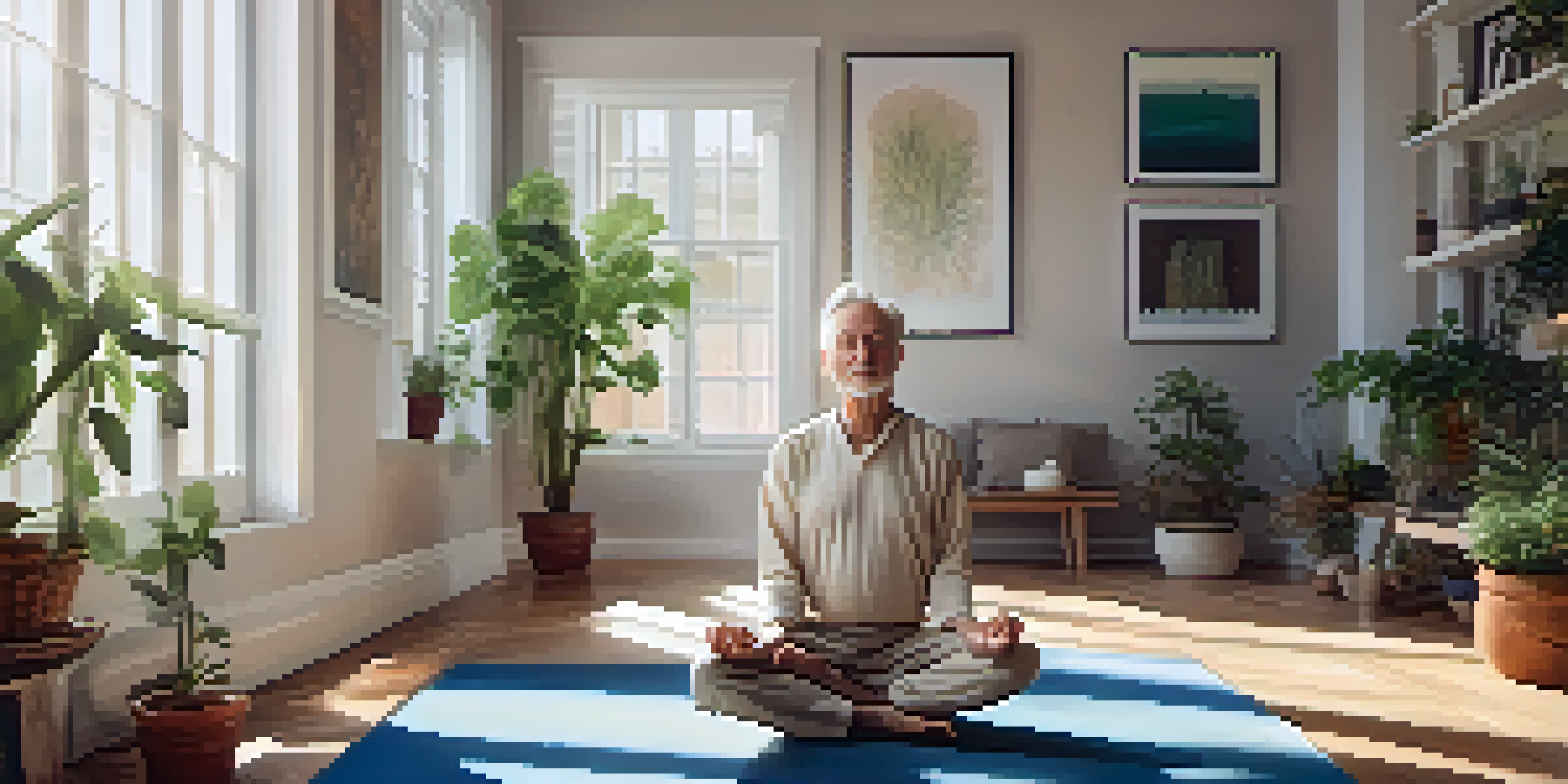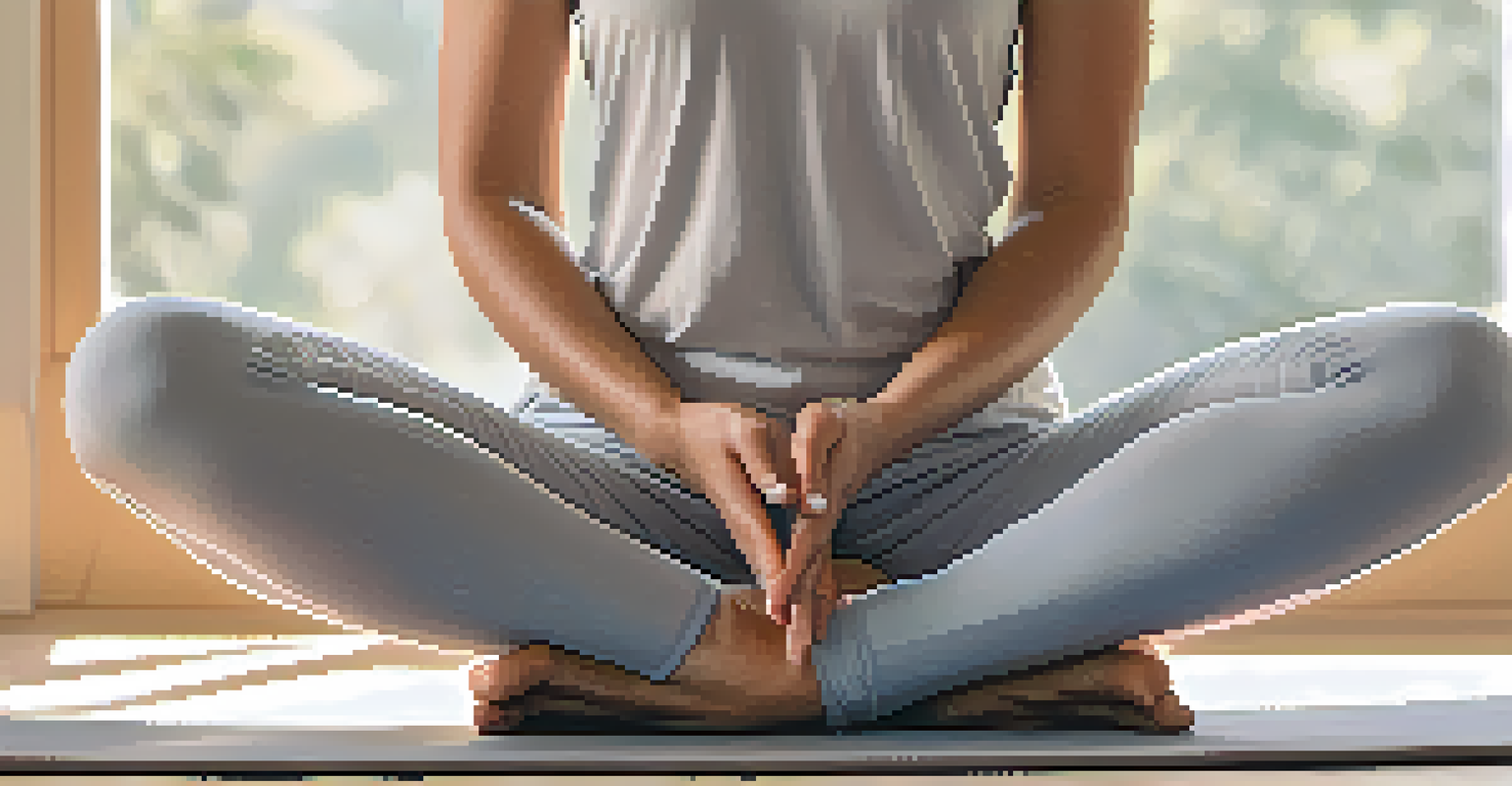Yoga and Flexibility for Aging Gracefully and Actively

Understanding Flexibility and Its Importance in Aging
Flexibility is the ability of our joints and muscles to move through their full range of motion. As we age, this natural flexibility can diminish, leading to stiffness and discomfort. Maintaining flexibility is crucial not just for physical health, but also for overall well-being as it helps prevent injuries and enhances mobility.
The mind is everything. What you think you become.
Incorporating flexibility exercises, such as yoga, can play a pivotal role in keeping our bodies agile. Unlike other forms of exercise, yoga emphasizes gentle stretching and controlled movements, making it ideal for older adults. This approach allows individuals to gradually improve their flexibility without the risk of overexertion.
Ultimately, maintaining flexibility supports daily activities, from reaching for items on high shelves to enjoying an active lifestyle. By embracing flexibility training, we empower ourselves to age gracefully while staying active and engaged in our lives.
The Role of Yoga in Enhancing Flexibility
Yoga is a holistic practice that combines physical postures, breathing techniques, and meditation. This multifaceted approach makes yoga a unique tool for enhancing flexibility. The various poses, or asanas, encourage deep stretching, which can gradually increase the elasticity of muscles and connective tissues.

For example, poses like Downward Dog and Cobra not only stretch the spine but also open up the hips and shoulders, areas often tight in older adults. Practicing these poses regularly can lead to noticeable improvements in flexibility over time. Moreover, yoga can also foster a sense of inner peace and mindfulness, making it easier to connect with our bodies.
Flexibility is Key for Aging Well
Maintaining flexibility enhances mobility and overall well-being, helping older adults lead more active and engaged lives.
The beauty of yoga lies in its adaptability; it can be tailored to fit individual needs and abilities. Whether you’re a beginner or more advanced, there’s a style of yoga that can benefit everyone and support the journey of aging actively.
Yoga Styles Suitable for Older Adults
Not all yoga styles are created equal, especially when considering the needs of older adults. Gentle styles like Hatha, Yin, and Restorative yoga focus on slow movements and prolonged stretches, which are perfect for enhancing flexibility safely. These practices allow participants to ease into poses without feeling rushed or overwhelmed.
Yoga is the journey of the self, through the self, to the self.
Chair yoga is another fantastic option, especially for those with mobility challenges. This style adapts traditional yoga poses for practice while seated, making it accessible for everyone. It encourages flexibility and strength without the need for getting on the floor, which can be a barrier for some.
Finally, it’s essential to listen to your body during these practices. Every person’s journey is unique, and modifying poses to suit your comfort level is not just acceptable but encouraged. This approach ensures yoga remains a nurturing experience rather than a strain.
Benefits of Flexibility Beyond the Mat
The benefits of improved flexibility extend far beyond the yoga mat. Enhanced flexibility can lead to better posture, which reduces strain on muscles and joints. Good posture not only helps us appear more confident but also supports the overall alignment of our bodies as we age.
Additionally, improved flexibility can enhance balance and coordination, which are crucial for preventing falls—a significant concern for older adults. When we can move freely and confidently, we’re more likely to engage in various physical activities, from hiking to dancing.
Yoga Adaptations for Older Adults
Gentle yoga styles, including chair yoga, provide safe and effective ways for older adults to improve flexibility without strain.
Lastly, the mental benefits of flexibility shouldn't be overlooked. The discipline and mindfulness cultivated through yoga can improve focus and reduce anxiety, making it easier to cope with the changes that come with aging. This holistic approach contributes to a more fulfilling life as we embrace the aging process.
Creating a Consistent Yoga Routine
Establishing a regular yoga practice is key to reaping its benefits. Start with short sessions a few times a week, gradually increasing the duration as you become more comfortable. Consistency is vital; just like any other form of exercise, the more you practice, the more flexible you will become.
Finding a supportive community can also enhance your yoga journey. Joining a class specifically designed for older adults can provide motivation and encouragement, making it easier to stick with your routine. Plus, sharing your experiences with others fosters a sense of belonging and camaraderie.
Additionally, incorporating yoga into your daily life doesn’t have to be time-consuming. Even a few minutes of stretching in the morning or before bed can make a significant difference. Small, consistent efforts can lead to remarkable improvements in flexibility and overall wellness.
Listening to Your Body: Key to Safe Practice
One of the most important aspects of practicing yoga, especially as we age, is learning to listen to our bodies. It’s crucial to distinguish between discomfort and pain; pushing through pain can lead to injuries. Instead, focus on what feels good and allows your body to stretch gently.
Remember, flexibility is not achieved overnight. It’s a gradual process that requires patience and self-compassion. Celebrate small victories, like reaching a little further in a stretch or holding a pose a bit longer.
Listen to Your Body for Safety
Understanding the difference between discomfort and pain is crucial for practicing yoga safely as you age.
Engaging in practices like yoga encourages a deeper connection with your body. Over time, you’ll become more attuned to your physical limits, helping you practice safely while still pushing for improvement. This mindful approach is essential for maintaining a healthy and active lifestyle.
Incorporating Yoga into Daily Life
Incorporating yoga into your daily routine can be easier than you think. Start by setting aside a specific time each day for your practice, whether it’s morning or evening. Creating a dedicated space in your home for yoga can also make your practice more inviting and enjoyable.
Consider combining yoga with other activities you love. For instance, you might incorporate gentle stretches before a daily walk or practice mindfulness techniques during moments of stress. This not only enhances your yoga practice but also enriches your overall lifestyle.

Ultimately, yoga is about creating balance—not just in your body, but in your life. By weaving yoga into your daily routine, you’re not just enhancing flexibility but nurturing a holistic approach to aging gracefully and actively.